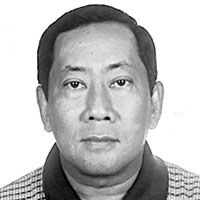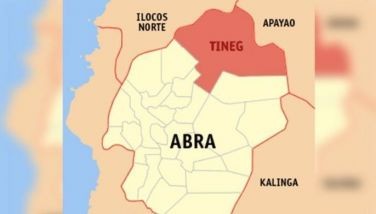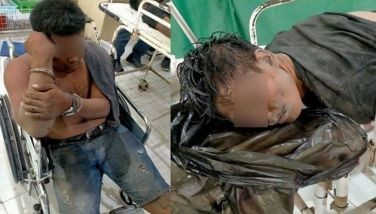Subdivisions are a threat to our airports

February 17, 2006 | 12:00am
Former Armed Forces chief Benjamin Defensor who is now the chairman of the Asia Pacific Economic Cooperation (APEC) anti-terrorism task force has revealed something quite scary. He said most of our airports are vulnerable to terrorist attacks. Shoulder-fired missiles (i.e. rocket propelled grenade) can hit airliners flying in and out of our airports. Whether we like it or not this is true in most of our airports and even in the United States.
In the past, airports were built as far away as possible from the city or urban centers. But today many of our airports are surrounded by housing projects…something that shouldn’t be allowed around anymore. Poor urban or city planning is the culprit. The Mactan Cebu International Airport (MCIA) is one example. Twenty years ago, no one cared to live within its confines. Today, so many subdivisions have sprouted around the airport. But I would like to believe that most houses there are just too far to be used by a terrorist with an RPG for hitting a plane.
Perhaps the most vulnerable is the Ninoy Aquino International Airport (NAIA) where you can even see houses just beside its security fence. What is being done about this? I don’t know, but the Arroyo administration must stop all housing developments near airports!
I still remember the time when the Lahug Airport was so far from downtown Cebu City and the Cebu Country Club was really in the countryside. But when airport operations were moved to Mactan, it seems that the subdivisions followed the airport. Meanwhile, we just have to live with the reality that many airports in this country and in other countries as well are easy prey for terrorists. Sad but true!
Still on the subject of terrorism, I hope you were able to watch last Tuesday’s National Geographic special on Air Crash Investigation entitled "Bomb on Board." This was the dramatic story of PAL Boeing 747 Flight No. 434 which flew from Manila to Cebu on Dec.11, 1994, then on to Tokyo with 292 passengers on board. A terrorist later identified as Ramzi Yousef planted a bomb on row 26 using a home-made timing device. The bomb exploded while the PAL plane was over Okinawa.
As the story goes, because the force of the bomb was upwards, not sideways, it killed a Japanese national, but did not damage the aircraft. PAL steward Fernando Bayot was able to administer first aid to the wounded and attend to the dead passenger. Actually, this story is one of heroism by PAL’s crew, including Pilot Capt. Ed Reyes, his co-pilot Jaime Herrera and flight engineer Dexter Commendador, who were able to land the stricken Jumbo jet at the Naha International Airport in Okinawa.
Until that show, we really don’t know what happened to that flight , probably because the PAL plane landed in Japan and not in the Philippines. It seems that Ramzi Yousef was responsible for the first bombing attempt of the World Trade Center. He was eventually caught and is now imprisoned in the US. The Philippine National Police (PNP) apparently discovered plans by Yousef to highjack US airliners and crash them on public buildings. Alas, no one took this plan seriously until Sept. 9, 2001.
Perhaps because of the stampede at Ultra, news about Charter change were buried in the inside pages of our newspapers. The last time we wrote about Cha-cha was last Jan. 30 when the attachment on Federalism was missing from the report of the Committee on Constitutional Amendments. Hence, I checked with my good friend, Prof. Fred Cabuang who texted me that that particular column was used by the committee to emphasize the need to re-insert the missing attachment. I guess they will now re-insert it. Prof. Cabuang also e-mailed me this letter, which is self-explanatory.
"Dear Bobit…. The famous saying "history repeats itself" is obviously happening again in the Legislature with regards to Charter change. In 2003, I was a member of the core group of the Citizens Coalition for Charter Change Now (CCCN) which drafted the proposed amendments to the 1987 Constitution, which was subsequently submitted to the Chairman of the Committee of Constitutional Amendments of the 12th Congress. Citizen’s consultations were made from the youth (SK) and student leaders to labor leaders, from the members of the business community to the ethnic communities.
Majority of the members of the lower house of Congress and majority members of the Leagues of Barangays, municipal and city mayors and governors overwhelmingy supported the draft proposal for Charter change (Mind you, the draft was not only printed but distributed in CD format!) until it finally rested on the members of the Senate who did not even debate on the issue on the Plenary from August 2003 until the last session of Congress.
Now, it’s happening again! The Senate is threatening that the Charter change issue will be "dead on arrival" at the Senate. I do not believe that members of the Senate do not want Charter change. If you ask them, they would say they overwhelmingly agree on it. As to whether to use Constitutional Convention or Constitutional Assembly, both lower and upper houses also do not agree on which mode to take.
Our Constitution stated three ways of amending the Constitution while the US has only two methods. And yet, the US has already approved 27 specific amendments. The most recent one was approved in 1992, which limits the ability of members of US Congress to increase their pay. (Note: definitely, this kind of amendment will never pass in the Philippines). The US Congress was able to amend the Constitution through "congressional initiative" (Note: not People’s Initiative) wherein Congress, by a two-thirds vote of both houses, agrees to send one or more proposed changes to the states for ratification. (Source: State & Local Government, 4th Ed. By Bowman/Kearney).
In the past, the citizens of the Philippines had the 1935 Malolos Constitution as a result of revolutionary struggle to reject the rule of Spain.Then came the 1935 Commonwealth Constitution that was practically dictated by the US and approved by President Franklin Roosevelt to reject the revolutionary charter. This was followed by the 1973 Constitution of President Ferdinand Marcos that legitimized his one-man rule and rejected the American-designed constitution. Finally, the 1987 Constitution, designed by a group of elite (mostly wealthy) who were personally chosen by President Corazon Aquino, was handed down to the citizens to reject the Marcos dictatorial constitution.
Now, if Congress ever succeeded in revising the 1987 Constitution, it could be the first time that the Philippines would have a Charter that would be designed with the citizens’ participation; not to reject the "the old Constitution of the country" but to strengthen our political system to get rid of the "scoundrels." Moreover, as a citizen, I believe that schanges in our present constitution are necessary to adjust to the vagaries of the future.
Thank you, Primo. Sincerely, Prof. Fred S. Cabuang (Sgd) SOLFED — Save Our Language through Federalism Foundation Inc."
For e-mail responses to this article, write to [email protected]. Bobit Avila’s columns can also be accessed through www.thefreeman.com. He also hosts a weekly talkshow entitled "Straight from the Sky" every Monday only in Metro Cebu on Channel 15 on SkyCable at 8 p.m.
In the past, airports were built as far away as possible from the city or urban centers. But today many of our airports are surrounded by housing projects…something that shouldn’t be allowed around anymore. Poor urban or city planning is the culprit. The Mactan Cebu International Airport (MCIA) is one example. Twenty years ago, no one cared to live within its confines. Today, so many subdivisions have sprouted around the airport. But I would like to believe that most houses there are just too far to be used by a terrorist with an RPG for hitting a plane.
Perhaps the most vulnerable is the Ninoy Aquino International Airport (NAIA) where you can even see houses just beside its security fence. What is being done about this? I don’t know, but the Arroyo administration must stop all housing developments near airports!
I still remember the time when the Lahug Airport was so far from downtown Cebu City and the Cebu Country Club was really in the countryside. But when airport operations were moved to Mactan, it seems that the subdivisions followed the airport. Meanwhile, we just have to live with the reality that many airports in this country and in other countries as well are easy prey for terrorists. Sad but true!
As the story goes, because the force of the bomb was upwards, not sideways, it killed a Japanese national, but did not damage the aircraft. PAL steward Fernando Bayot was able to administer first aid to the wounded and attend to the dead passenger. Actually, this story is one of heroism by PAL’s crew, including Pilot Capt. Ed Reyes, his co-pilot Jaime Herrera and flight engineer Dexter Commendador, who were able to land the stricken Jumbo jet at the Naha International Airport in Okinawa.
Until that show, we really don’t know what happened to that flight , probably because the PAL plane landed in Japan and not in the Philippines. It seems that Ramzi Yousef was responsible for the first bombing attempt of the World Trade Center. He was eventually caught and is now imprisoned in the US. The Philippine National Police (PNP) apparently discovered plans by Yousef to highjack US airliners and crash them on public buildings. Alas, no one took this plan seriously until Sept. 9, 2001.
"Dear Bobit…. The famous saying "history repeats itself" is obviously happening again in the Legislature with regards to Charter change. In 2003, I was a member of the core group of the Citizens Coalition for Charter Change Now (CCCN) which drafted the proposed amendments to the 1987 Constitution, which was subsequently submitted to the Chairman of the Committee of Constitutional Amendments of the 12th Congress. Citizen’s consultations were made from the youth (SK) and student leaders to labor leaders, from the members of the business community to the ethnic communities.
Majority of the members of the lower house of Congress and majority members of the Leagues of Barangays, municipal and city mayors and governors overwhelmingy supported the draft proposal for Charter change (Mind you, the draft was not only printed but distributed in CD format!) until it finally rested on the members of the Senate who did not even debate on the issue on the Plenary from August 2003 until the last session of Congress.
Now, it’s happening again! The Senate is threatening that the Charter change issue will be "dead on arrival" at the Senate. I do not believe that members of the Senate do not want Charter change. If you ask them, they would say they overwhelmingly agree on it. As to whether to use Constitutional Convention or Constitutional Assembly, both lower and upper houses also do not agree on which mode to take.
Our Constitution stated three ways of amending the Constitution while the US has only two methods. And yet, the US has already approved 27 specific amendments. The most recent one was approved in 1992, which limits the ability of members of US Congress to increase their pay. (Note: definitely, this kind of amendment will never pass in the Philippines). The US Congress was able to amend the Constitution through "congressional initiative" (Note: not People’s Initiative) wherein Congress, by a two-thirds vote of both houses, agrees to send one or more proposed changes to the states for ratification. (Source: State & Local Government, 4th Ed. By Bowman/Kearney).
In the past, the citizens of the Philippines had the 1935 Malolos Constitution as a result of revolutionary struggle to reject the rule of Spain.Then came the 1935 Commonwealth Constitution that was practically dictated by the US and approved by President Franklin Roosevelt to reject the revolutionary charter. This was followed by the 1973 Constitution of President Ferdinand Marcos that legitimized his one-man rule and rejected the American-designed constitution. Finally, the 1987 Constitution, designed by a group of elite (mostly wealthy) who were personally chosen by President Corazon Aquino, was handed down to the citizens to reject the Marcos dictatorial constitution.
Now, if Congress ever succeeded in revising the 1987 Constitution, it could be the first time that the Philippines would have a Charter that would be designed with the citizens’ participation; not to reject the "the old Constitution of the country" but to strengthen our political system to get rid of the "scoundrels." Moreover, as a citizen, I believe that schanges in our present constitution are necessary to adjust to the vagaries of the future.
Thank you, Primo. Sincerely, Prof. Fred S. Cabuang (Sgd) SOLFED — Save Our Language through Federalism Foundation Inc."
BrandSpace Articles
<
>
- Latest
- Trending
Trending
Latest
Trending
Latest
Recommended



























